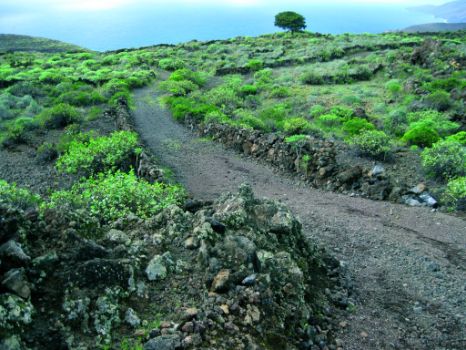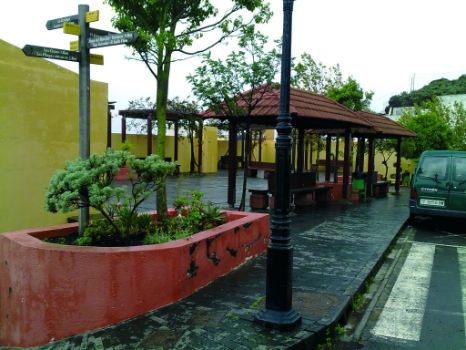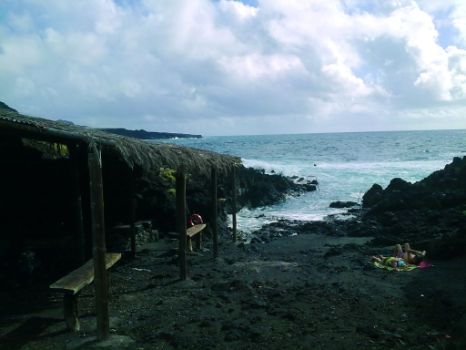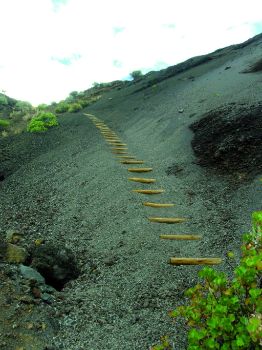Net of Natural
Trails

Stage 4: Tacorón- El Pinar
Description
Over Mar de las Calmas
From the small cove of Tacorón, where only a hint of breeze can reach us through the sheltering rocks, the trail rises above the Reserva Marina Punta de La Restinga – Mar de las Calmas (Marine Reserve Punta de La Restinga – Sea of Calm) of high biological value, to continue in the vicinity of the mountains of El Julán until reaching the small village of Taibique in the municipality of El Pinar.

The fourth stage of the circular trail starts in the small cove of Tacorón, one of the beaches most visited by the people of the island. Situated northeast of La Restinga, it has amazingly crystal-clear waters and a shore made of volcanic rock. Due to the situation of the cove, sheltered among rocks, there is hardly the hint of a breeze and the waters are always calm. Near the cove is the famous Cueva del Diablo (Devil’s Cave).
The coastline of the entire area is included in the Marine Reserve Punta de La Restinga – Mar de las Calmas.
Once past the newstand/bar located next to the cove, the trail ascends a few meters along a winding road. As we go up, we can see more clearly the landscape in and around Mar de las Calmas (Sea of Calm).

Once we leave the road behind us, the trail ascends gently along a well-marked path that goes through lands covered with Canary Island sorrel (Rumex lunaria) and tabaiba (Euphorbia sp.), which are plants typical of this altitude, giving way to a more level ground in the vicinity of the mountains of El Julán. Here the land is divided by numerous dry stone walls that mark the boundary between farms and grazing fields for animals (particularly goats) whose mixed milk is used in the production of the coveted cheese of Hierro.
In we continue the ascent, we will reach an area where the trail alternates between dirt tracks flanked by stone walls and paved roads. In this section of the trail we begin to see isolated buildings and farms in a landscape that combines small estates covered with vineyards and meadows and plots and fields where prickly pears (Opuntia maxima) and Canary Island sorrel have colonized the soil.
This section ends when the path – following the road that goes up from La Restinga – goes into the streets of the village of Taibique, in the municipality of El Pinar, reaching the main square, where this section of the trail comes to its end.
Profile
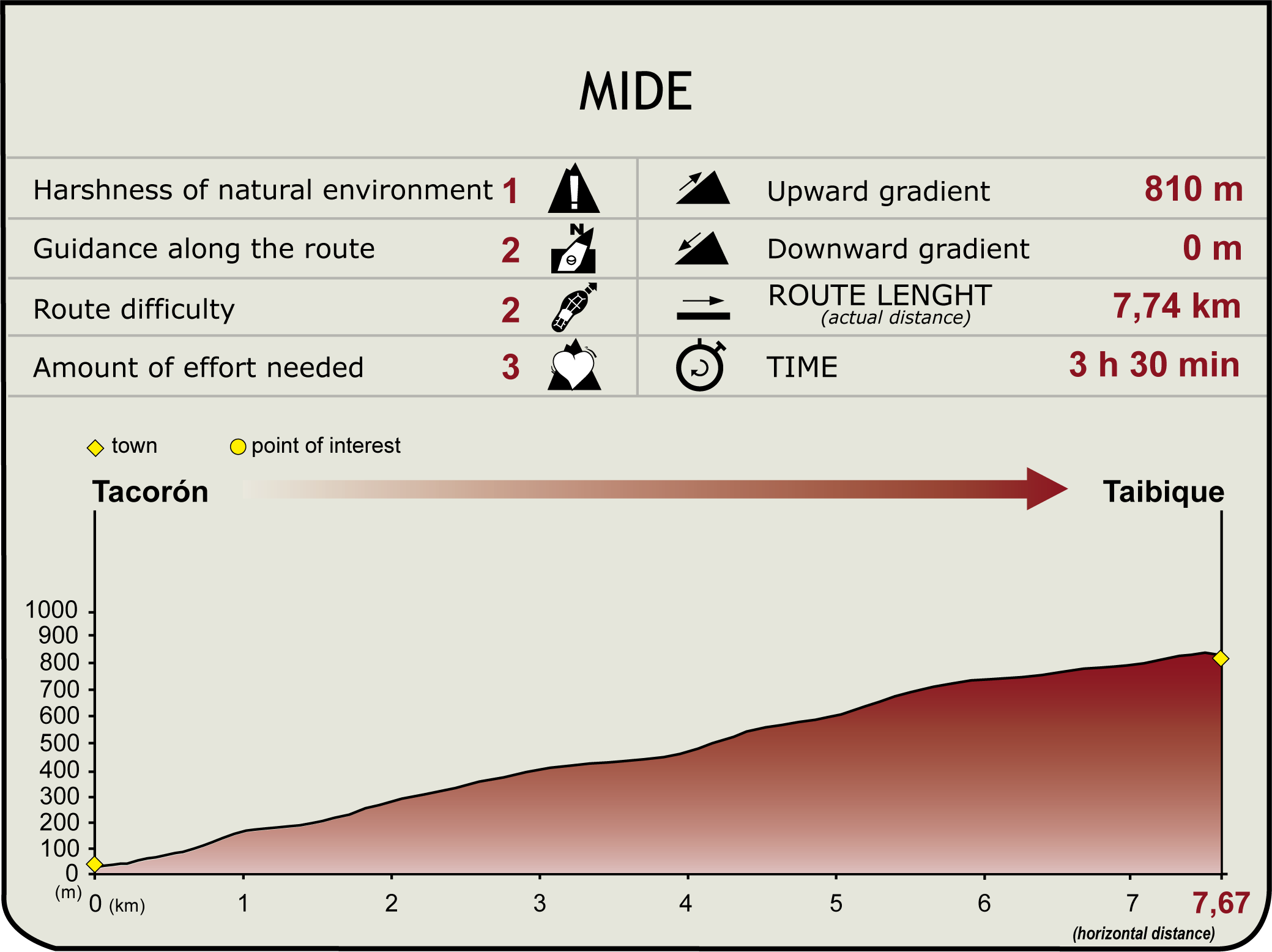
Highlights
Further information
Marine Reserve Punta de La Restinga - Mar de las Calmas
Since El Hierro is a volcanic island, the sea in the Marine Reserve of Punta de la Restinga-Mar de las Calmas - situated on the southwestern tip of the island - reaches great depths of more than 300 meters. The shape of the territory of the reserve is roughly that of a trapezoid with an area of 750 hectares divided equally between external and internal waters.
One of the characteristics of the waters of the reserve is that they are constantly calm - thanks to the fact that this region is sheltered from the trade winds – as well as tropical in nature, which means that they are populated by a number of species not found in any other Canary Island. The fact that the waters here are almost totally covered in seaweed, and the existence of great diversity of marine resources, favors a high level of biodiversity.
The vegetation cover, which can reach a depth of up to 70 meters, is very thick, with a preponderance of calcareous and brown algae. The sea bed is rocky and precipitous, with caves, tunnels, and sharp drops which are home to lobsters (Panulirus sp.), black (Antípathes sp.) and yellow (Leptosammia pruvoti) coral, shrimp (Palaemon sp.), anemones and sponges, as well as other invertebrate species.
Fishery resources are managed by means of artisanal fishery, which has resulted in some fishing modalities specific to this area. The situation of the reserve - sheltered as it is from the winds and prevailing currents - makes it possible for fishers to work no-stop in this area, which has been one of the reasons for the creation of the reserve, one of whose purposes is to prevent eventual overfishing.
The community of coastal seabed species is very rich and varied. There is a large number of Viejas o parrot fish, combers or cabrilla, soles, island groupers and different species of moray eels, good for fishing. Tuna-like species such as bonito, skipjack, wahoo, albacore and little tunny, make this the most important fishery in the area in spring and summer. The waters of the reserve are also visited by offshore species such as whale sharks (Rhincodon typus), manta rays (Manta birostris), sea turtles and dolphins.



